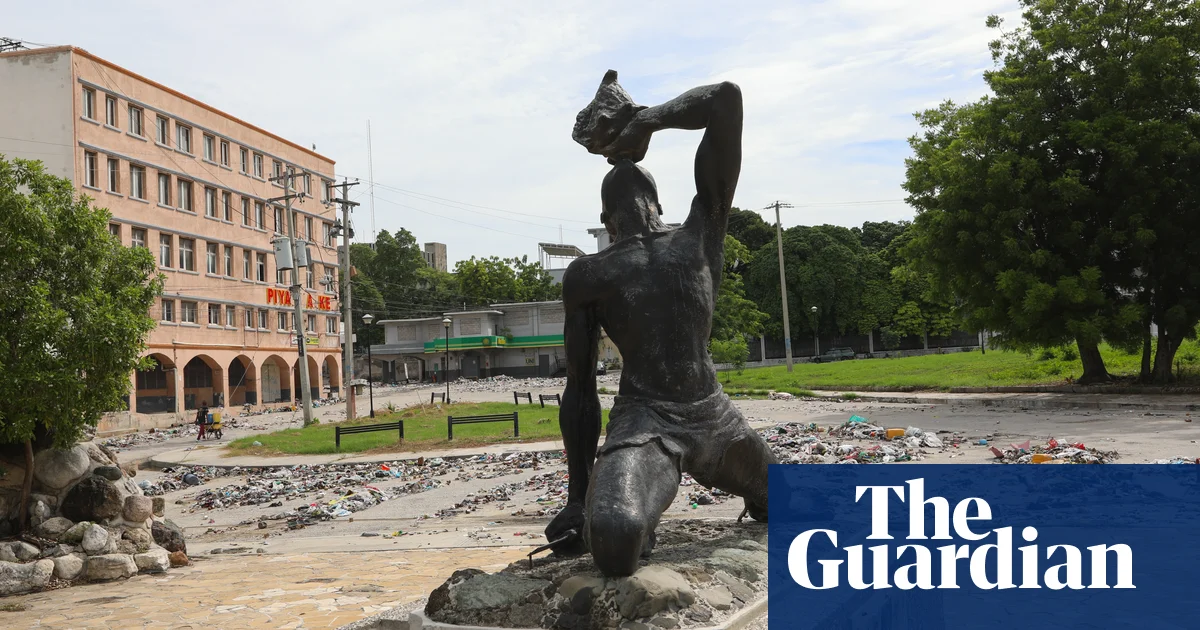Link : The Guardian website
Client : The Guardian
Category : Journalism, Writing, Production
The depiction of the Unknown Maroon – the Nèg Mawon – was commissioned by a dictator to represent freedom and now stands in the middle of a war zone
Tom Phillips and Etienne Côté-Paluck in Port-au-Prince
Wed 12 Mar 2025 10.00 GMT
The Unknown Maroon faces west towards a wasteland of bullet-pocked buildings and desolate, litter-strewn streets.
To the statue’s left, armored cash transit vans race down Barracks Street towards Port-au-Prince’s waterfront as the sound of gunfire rings out.
To its right sits a deserted school, whose principal was not long ago kidnapped, and a dilapidated concrete panel that once held a plaque honoring the rebel slave celebrated by the bronze sculpture. “In his deeds he was like a lion … and his memory will be blessed forever,” that stolen tribute used to read.
Nearly 60 years after its unveiling, the statue of the Unknown Maroon – or the Nèg Mawon as Haitians call it in Kreyòl – stands almost entirely alone on the front line of a forgotten conflict. He has become one of the most powerful symbols of Haiti’s catastrophe and its determination to resist.
Read more:

Cover photo : Odelyn Joseph/The Guardian
